Exploring how we can make an impact - clever design thinking, materials specification, awareness of suppliers and simple changes on how the design studio is run day to day.
93ft are proud signatories of the Architects Declare movement. Our interiors department - and 93ft as a whole - recognises that building and construction play a major role in the climate crisis, with 40% of CO2 stemming from the building industry. If there are changes to be made, we want to make them.
Net zero refers to a balance between greenhouse gas emissions (chiefly carbon dioxide (CO2) and methane (CH4)) where any gases being released into the atmosphere by business, transport, agriculture etc. are stored in carbon sinks, such as forests or peatlands.
The UK government is planning to reach net zero by 2050. 93ft would like to get there sooner. We’re exploring how we can make an impact, in our interiors and architecture department, our manufacturing workshop and throughout the business.
The building and urban development industry is expanding year on year. In order to significantly reduce the impact of construction we need to engage in a new way of thinking and working in the industry, we need a paradigm shift in the way we approach designing buildings both new builds and renovating older buildings.
We need to move from “extractive, degenerative and linear to regenerative, circular and low carbon.”
To be able to enact change we need a strategy for change and so, alongside our declaration, 93ft have created a personalised studio and project roadmap which will enable us to make meaningful and lasting changes.
We developed our roadmap using the incredibly useful, free resources available on the Architects Declare website. If your business is ready to make changes, this is a great place to start, with relevant, accessible and up to date content to support change in all industries.
Our journey towards net zero began by hosting an honest, ‘no blame,’ round table discussion with our design studio to talk through the impacts of both our practice operations and our projects.This workshop provided the team with a platform to discuss uncertainties, challenges and the opportunities we face in reducing our carbon footprint.
Our short term plan is grounded in our current expertise which empowers us to make rapid, meaningful change while we also work on identifying gaps in our knowledge. We’ll work to close these gaps through upskilling, training and bringing in outside expertise.
We plan to nurture a culture of learning within the team, developing our long term plan and remaining agile as new technologies are released over the next critical decade.
By publishing the key components of our plan, and continuing to update as we learn, grow and develop, we are living up to our ideals, inviting our team, clients, and collaborators to hold us to account.
Transparency not only keeps us on the right track, but allows us to be an example to other design studios – if we can do it, so can you.
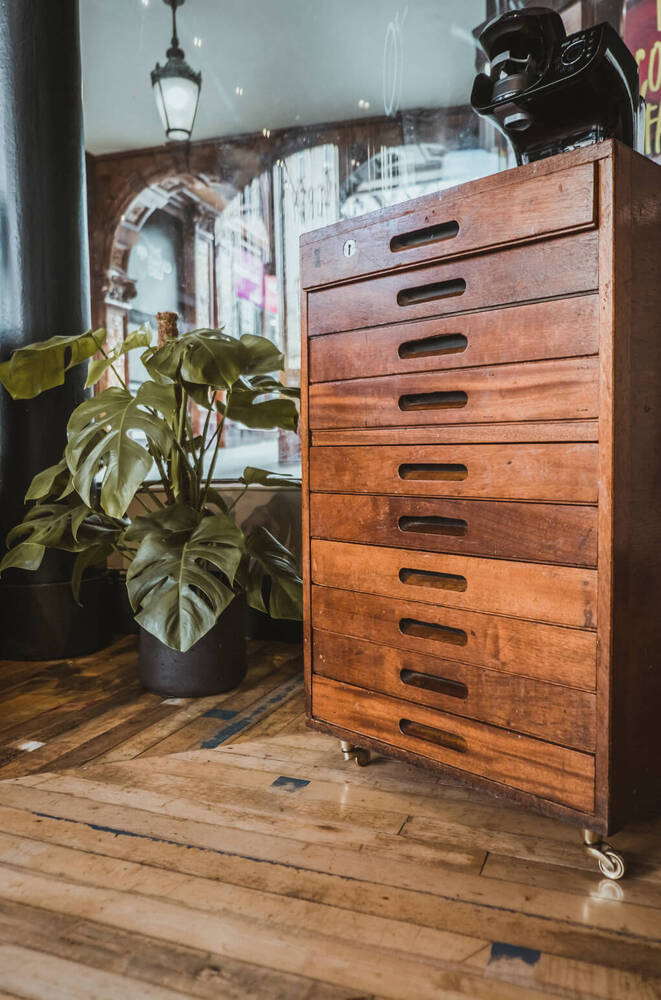
Carl Elefante, former president of the American Institute of Architects, said: “The greenest building is the one that already exists”.
Working with existing buildings is our bread and butter here at 93ft. Retrofit projects are often the ones we find most inspiring and the beautiful thing is, retrofitting – rather than building new – reduces carbon emissions by minimising demolition works and the use of virgin materials.
Many of our projects are located within post-industrial buildings, and we relish breathing new life into these often neglected spaces.
When we retrofit buildings, we celebrate their original, raw materials for their beauty and their unrivalled environmental benefits. An exposed concrete waffle slab is not only abundant in personality, it’s an excellent source of natural heating and cooling.
We’re committed to expanding our knowledge of how to improve the fabric of existing buildings to increase their performance and lower energy use. This will ensure our retrofit projects not only have low embodied carbon but reduced operational carbon as well.
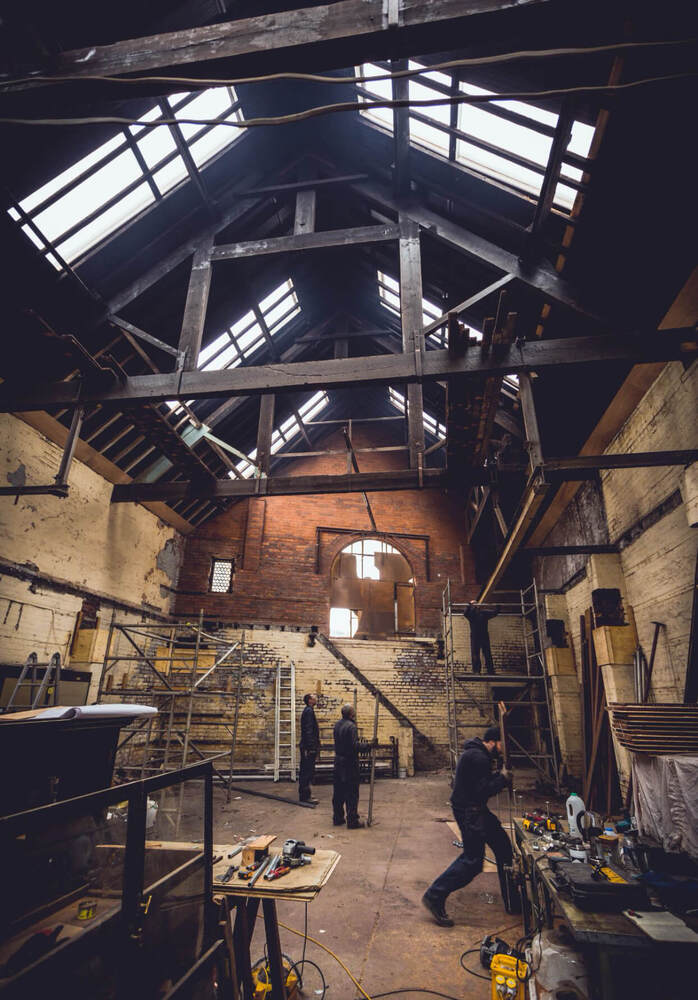
“The primary goal of a circular economy is to use and reuse materials.”
Traditional construction and architecture practice operates via a linear economy of “take-make-use-dispose.” At 93ft, we are working to embrace a circular economy which focuses on “reuse, repair, refurbish, recycle and renovation.”
Reusing materials should not increase the overall project cost however if you are a designer thinking of using reclaimed materials in your own projects, then we recommend developing a reclaim strategy as part of your design process from the project kickoff.
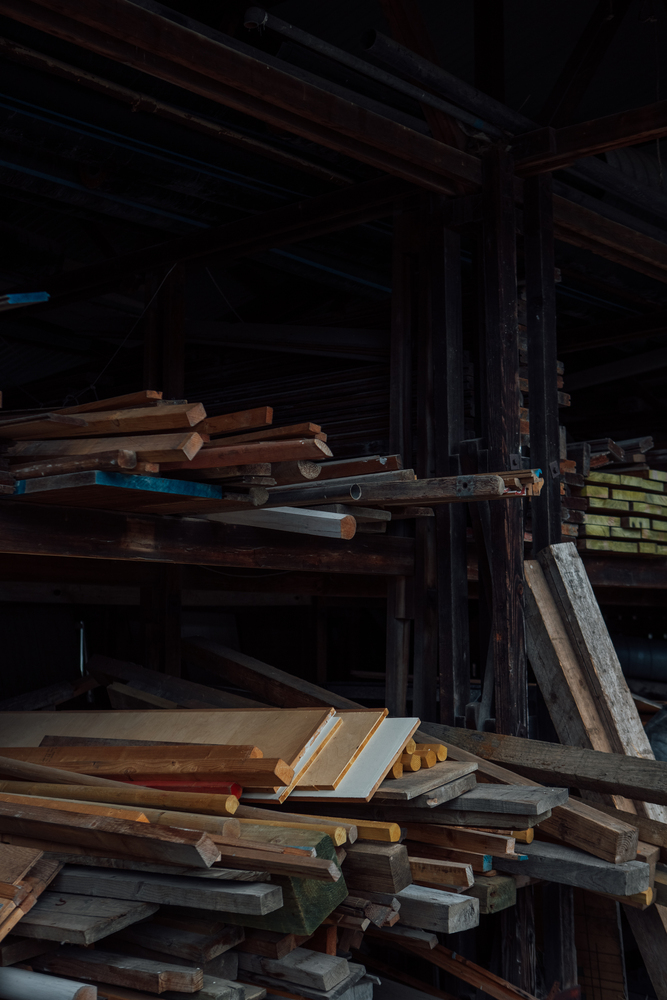
Materials such as timber, brick, roof slates and pavers are easily reclaimed. “When timber is reused, it reduces nearly 80% of its environmental impact compared to virgin timber.”* At 93ft we use a lot of reclaimed timber flooring for its beautiful aesthetic qualities and the abundance of character it adds to our schemes.
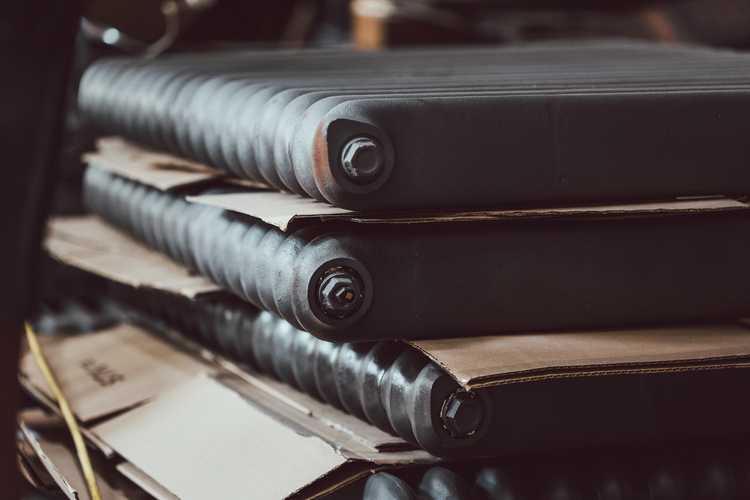
93ft are a team of makers. Our multidisciplinary studio has the expertise and resources to bring our creativity to life through our manufacturing workshop. All our departments, from Branding to Interiors and Architecture work closely with our furniture design and manufacturing team to create bespoke pieces that capture the unique essence of each client's brief.
We have real capacity for change here because we are in control of our design and manufacturing process. Over the coming year we will refine our process to eliminate waste and design for easy repair - the opposite of the cheap disposable consumable culture that often abounds.
We’ll carefully consider how our bespoke pieces fit together so they can be easily disassembled to ensure the materials can be reused in the future.
Designing for disassembly is a key part of both our short and long term sustainability plan.
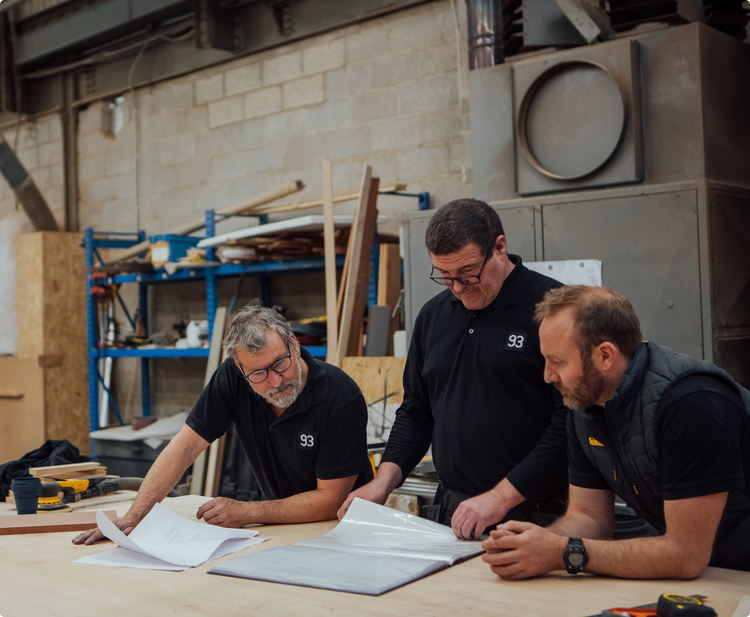
We believe that great materials are at the heart of great design. When it comes to designing better we can make a huge impact by simply making better choices when specifying products for each project.
We reclaim raw materials and reuse architectural salvage prominently across all our projects. Salvaging materials that would otherwise go to landfill cares for our planet and adds a unique, authentic richness of character to a scheme.
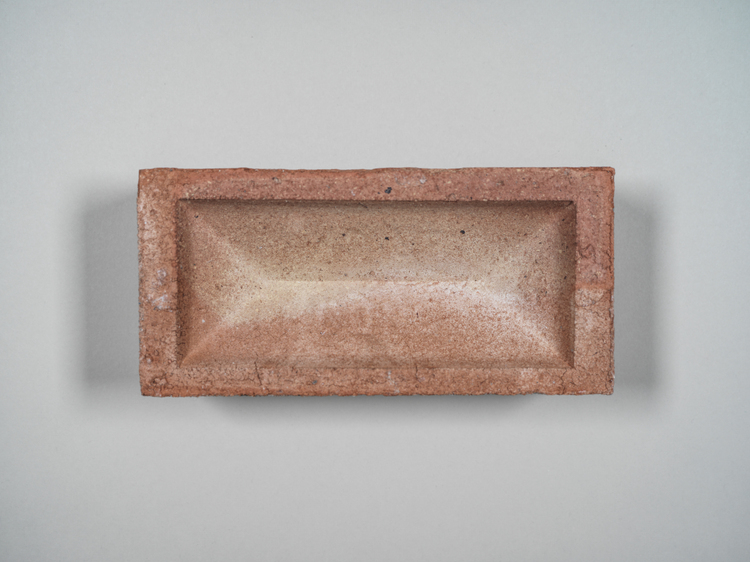
Our Materials Library exists in our design studio to showcase our top choices for great flooring, tiles, textiles, carpets, sheet material and paints. We undertake an in-depth analysis of each material before it makes it into our exclusive Materials Library gold standard list. We consider important aspects such as VOC levels, recycled content, lifespan, locality of raw material, locality of manufacture and overall embodied carbon.
Tip for designers: If you are building your own materials library a great starting point for choosing sustainable materials is ensuring they’re natural and renewable. These are materials that are grown or extracted but not processed, e.g timber, bamboo, unfired clay and stone.
Choose materials that require minimal or no level of finish. For example, refrain from using wallpaper as it is often finished with a vinyl/PVC coating . Materials that are locally sourced and manufactured in the UK will have lower embodied carbon than those manufactured abroad so always choose local where you can!
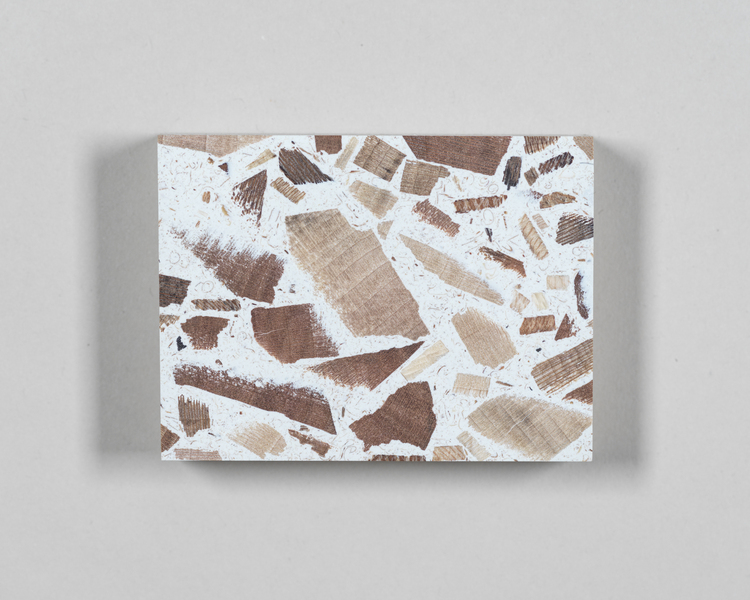
93ft is proud to support local artists and small businesses, and this influences our aesthetic of authenticity. We are moving away from specifying plastic vinyls which go to landfill and instead we champion hand painted and hand crafted signage.
We also work on many projects with Neon Workshops, a local company who are passionate about reducing harmful and toxic LEDs which often end up in landfill, and championing robust, long lasting glass tube signage instead.
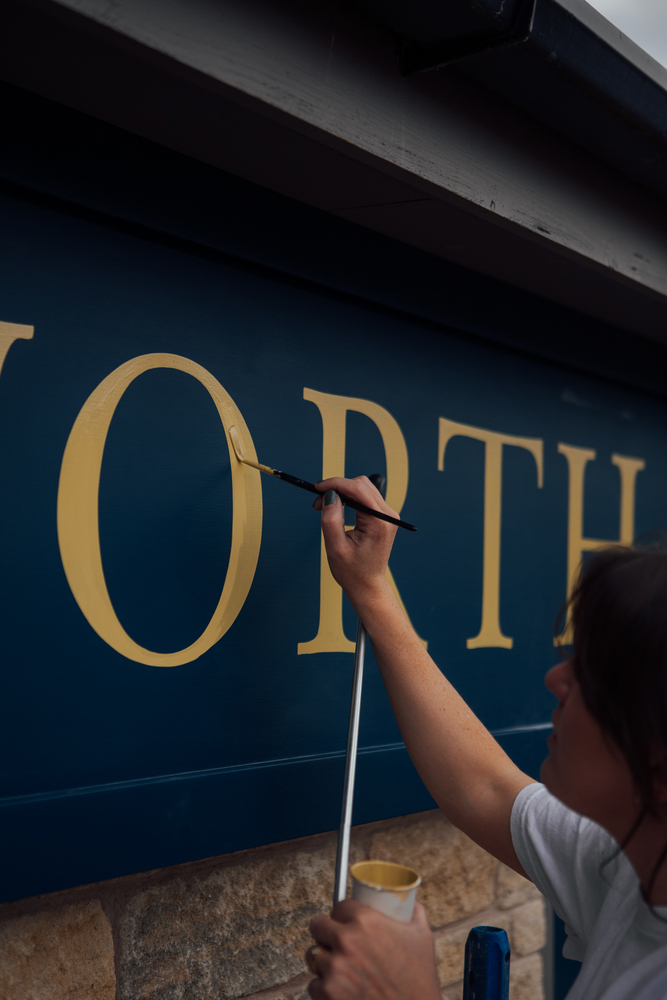
Tracking the embodied and operational carbon of our projects is the biggest component of our roadmap. We know that getting this right will significantly contribute to our ability to deliver carbon zero projects, however it also presents the biggest gap in our current knowledge.
We’ve started this process by calculating the carbon footprint of an existing project and will use the tool to analyse our future projects. This tool graphically represents the impacts that our material choices have on a building's embodied carbon.
Tip for designers: This tool can be downloaded for free from: https://fcbstudios.com/fcbscarbon
This area requires an investment into learning and development which has been written into our 5 year plan.
While ensuring our projects are contributing meaningfully to our carbon zero targets it’s vital that our Kelham Island studio is leading by example.
Here’s what we’re focusing on:
“Sustainability does not simply begin and end with reducing carbon”
At 93ft we understand how thoughtful and beautifully designed interiors influence and shape a person’s sense of place and safety. It’s important to us to create this same sense of wellbeing for our staff in our office environment as well.
Sustainable buildings are designed to improve the wellbeing of people who use them. The buildings we create and work in have enormous impacts on our quality of life and we see firsthand that when people love where they work their creativity thrives.
We are now measuring our office’s internal air quality, using a device from Airthings. This device records data hourly, providing live updates about office CO? levels, VOC, temp and humidity. When CO2 gets too high the room can begin to feel ‘stuffy’ and people may develop headaches and lose focus. By measuring air quality we can make changes (usually as simple as opening a window) to immediately improve our working environment.
We carried out an assessment of our biodiversity and biophilic design around the office to ensure that all workstations are oriented to either views outside or towards indoor plants. Connection to nature does wonders for wellbeing and we are also enjoying the use of our roof terrace garden now that the sun has come out!
A big step towards ensuring better wellbeing for our staff is starting an open discussion about burnout.
“A 2020 survey revealed that around 22% of UK adults have experienced job-related burnout.”
The happier and healthier we are, the more headspace we have to cope with life’s ups and downs.”
We are using this year to focus on our team, making regular check-ins a priority so that everyone is given the opportunity to talk about workloads and personal stress levels. By regularly monitoring our resourcing and capacity to take on new projects we can mitigate harmful scenarios before they lead to burnout.
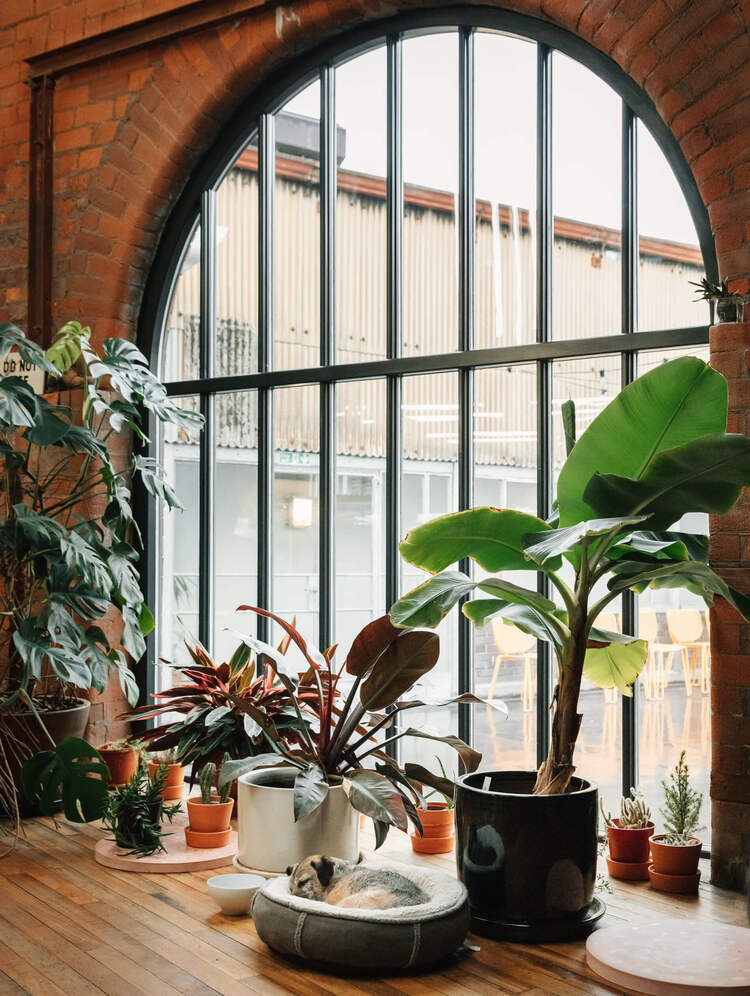
We have conducted a quick calculation of our office footprint based on our previous year electricity and gas consumption. Currently, this calculation only considers Scope 1 and 2 emissions (direct energy and processes and indirect impact from electricity), it doesn't yet include our scope 3 emissions (impact of staff travel, and consumables.)
Over the coming weeks we’ll undertake a comprehensive carbon footprint analysis which we will share with you. We’ve committed to switching energy providers to ensure all our electricity comes from renewables. Our aim is to reduce our practice footprint 50% by 2025 and to be carbon neutral by 2030. We’re committing to the transparent publication of our progress over the coming years.
We assessed our consumables and identified a few quick wins such as switching from milk in single use plastic bottles to a delivery of milk in reusable glass bottles.
We order our milk through All Seasons who are a local, Sheffield fruit and veg wholesaler. We can't use a regular milkman as there is nowhere to securely leave the milk when we are not in so we had to think outside the box.
Members of our team also have milk delivered to their homes and can highly recommend The Modern Milkman.
Our coffee is lovingly supplied by Dark Woods, a B Corp certified company, based locally in Huddersfield.
We also plan on switching to a B Corp certified, social enterprise toilet paper company called Who Gives a Crap. B Corps look after their staff and our planet while social enterprises reinvest a percentage of their profits back into the community. By investing in these companies we’re confident our money is supporting our community.
We’re proud to share that the majority of our staff already commute to work in low carbon ways by cycling, walking or driving electric vehicles.
During our workshop we discussed ways to encourage more people to take up walking or cycling including offering flexible start times that support longer travel distances. We also discussed designing a bike storage to better care for our team members who cycle to work, and encourage more to start.
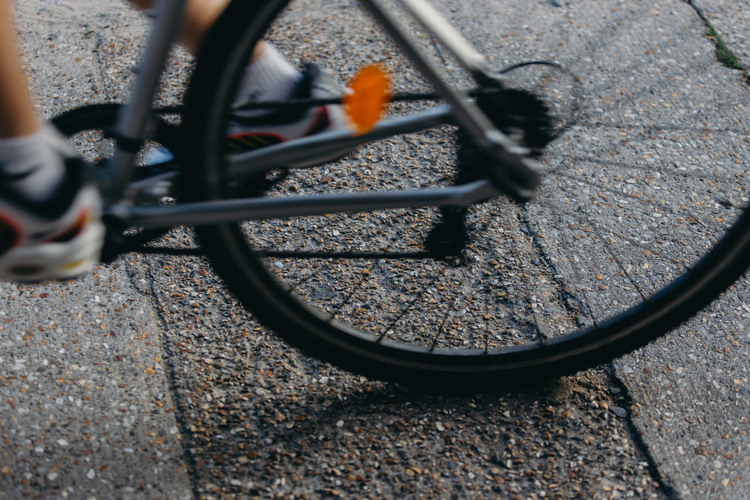
100 companies contribute to 70% of global emissions. When we consider the impact of this, it can be difficult to see how individual actions can possibly have a meaningful impact. However, we do have the power to defund these companies by switching to businesses which don’t invest or support fossil fuel companies and this is exactly what 93ft are doing.
An area we may not immediately think of when considering climate change is our pension fund, however many schemes invest heavily in fossil fuel companies. 93ft is switching to banks and pension fund providers who pledge not to invest in, or support, fossil fuel companies, meaning our clients’ and team’s money is used wisely.
A journey of a thousand miles begins with a single step – Lao Tzu
We recognise that the steps we’ve outlined in our roadmap are just the beginning and that as our own learning and awareness develop we will no doubt identify many more areas for improvement. But by consciously beginning this journey with our team and clients, we hope to make a real impact on our environment.
Is your business making similar changes? Or wondering where to start? Do you have questions about our actions? We’d love to hear from you.
Credit
*Environmental Design Pocketbook, 2nd Edition, Page 175 - 176